Tags
"PSF"
Five Things You Need to Know About Interning in Barcelona
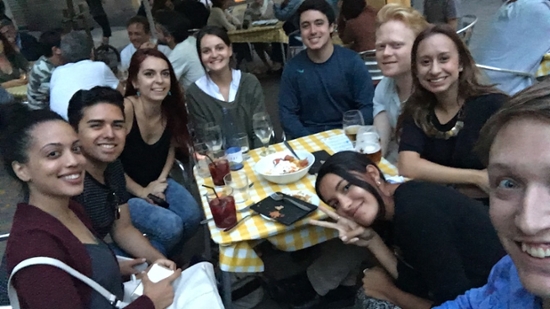
Taking some time for tapas with the rest of the Adelante Abroad squad! During the first week of the program, we met up together to talk about our different internship and to get to know one another.
Over the summer, I went to Barcelona to fulfill an internship through the intern abroad company Adelante Abroad. This experience was beyond anything I could have imagined, and went far beyond what I planned; what had started as a proposed legal internship in immigration turned into working with an associated client, Casal Lambda, an LGBT Catalunyan organization (more on that below). Not everything is going to be how you expect when you go abroad, so here are FIVE things you need to know about your time spent in Barcelona!
The people of Barcelona, a city within the Province of Catalunuya, take immense amounts of pride in the differences between their culture and language and other Spanish cultures, particularly Castellano. What Americans typically know as Spanish is actually of the Castellano dialect of Spain (often mixed with other dialects depending on location). Barcelona and citizens of Catalunya proudly speak Catalán as a first language, which sounds like a mix between Spanish and French. If you don’t know Catalán, people are actually more likely to speak to you in English than Catalán. As an intern that had never been exposed to the culture and only spoke Spanish, this was a bit jarring at first. It took a while to really understand the differences, and also to pick up some understanding of the language. My internship ended up being associated very strongly with the Catalán culture, and so Catalán was spoken frequently around me. Castellano was spoken on request, but was somewhat looked down upon. This was constructive though, as it allowed me to both come into a greater understanding about a society I had never been as well as attain a larger grasp on the language.
Continue reading Five Things You Need to Know About Interning in Barcelona
Presidents Summer Fellowship 2015, Impressions from Saint Petersburg Part 3, Orla O'Sullivan
Orla O'Sullivan '16, Russian major, is diving deep into the extensive collections at the State Hermitage Museum in Saint Petersburg, Russia, conducting research on visual culture and responses to controversial exhibitions for her President's Summer Fellowship.
The three months since returning from Russia have been a blur of starting my thesis, and running between classes, and intermittently, reflecting upon my trip. I feel inexplicably grateful for receiving the opportunity to intern at the Hermitage, study classical and contemporary Russian art, and learn how to articulate critical analyses using idiomatic Russian. I, moreover, feel so grateful for this opportunity to continually stretch my ability to move through and be comfortable in new situations, geographically, interpersonally, and linguistically. Thank you.
As my two prior posts express, I was, and continue to be, particularly interested to study Russian visual culture, civil society, and their influences. My project, which was founded upon three tiers of museum internship, art historical research, and language study aimed to examine these three aspects within a Russian cultural context, because the field is difficult to study and access in the U.S.
Continue reading Presidents Summer Fellowship 2015, Impressions from Saint Petersburg Part 3, Orla O'Sullivan
Presidents Summer Fellowship, Modeling Fluid Dynamics Part 3, Qiaoyu Yang
President’s Summer Fellow Qiaoyu Yang ’16, mathematics major, is testing a probabilistic particle model for studying fluid dynamics with Prof. Aleksandar Donev at the Courant Institute in New York City.
This summer, I worked with Prof. Aleksandar Donev in Courant Institute to perform particle simulation for chemically reactive fluid. In the following I will try to explain the essentials of the project.
Our research problem is to model reactive fluid. Traditionally, fluids’ dynamics are modeled mostly by differential equations. However, in our case, because of the chemical reactions involved, some assumptions about the fluid is very different from reality and this makes the results described by differential equation to be inaccurate. Therefore, we need to use some other methods.
Presidents Summer Fellowship, Supernatural Shakespearian Webseries Part 3, Liz Groombridge
President’s Summer Fellow Elizabeth Groombridge ’16, psychology/theater major, is writing and creating a queer, supernatural webseries, “The Green’s Apartment”, based on Shakespeare’s comedy As You Like It.
Final Days
After the data loss panic of the last post, the hard drive came back with 90% of the data recovered. A few shots were lost, leading to a few odd shot choices in the past 5 episodes, but enough was recovered that the series was able to be finished. And the footage for the last 4 episodes (the ones still coming out) was stored on another drive, so the project is completely out of the woods now.
Continue reading Presidents Summer Fellowship, Supernatural Shakespearian Webseries Part 3, Liz Groombridge
Presidents Summer Fellowship, Connecting to Armenian Artists Part 3, Knar Hovakimyan
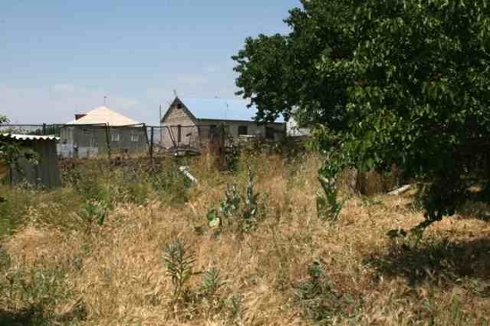
Let's talk translation.
I was really surprised to find that the most difficult part of the translation process was reading the poems. This task seemed easiest at first, but when I actually set out to produce a literal translation of a poem, I found myself completely lost. For a while I thought that my Armenian language skills were just not up to par, but I soon realized that the difficulty was not in understanding the meaning of the words, but uncovering their role within the line and within the whole poem. I had to think deeply about what the author of the poem intended with each word since soon I would become the author of the translation, and ideally I would have the same intentions. So the first step was deep reading and analysis to produce a literal translation.
Continue reading Presidents Summer Fellowship, Connecting to Armenian Artists Part 3, Knar Hovakimyan
Presidents Summer Fellowship, Nanofluids and Gene Mapping Part 3, Abrar Abidi

For his President's Summer Fellowship, Abrar Abidi ’16, physics major is working in a lab at McGill University in Canada, helping to develop new nanofluid technology to improve DNA mapping methods. Read on for his third and final blog installment:
Since leaving Montreal at the end of August, I’ve thought back many times to that day I walked through the old city and down to the port. There, in the Fleuve Saint-Laurent, which flows down to the Great Lakes, lies the small Île Sainte-Hélène. And on the other side of this island, half-concealed by a line of trees, is a structure that looks like it came from another planet. Two hundred feet high, and webbed with steel beams and acrylic panels in the shape of a globe, this exotic building disorients anyone that sees it. It is, of course, the Montreal Biosphere, built a half-century ago by Buckminster Fuller for Expo 67, the most successful world’s fair of the 20th century. In its time, when so many countries were riven by wars and paranoia, Expo 67 offered the world a brief remove from the painful past and shameful present—it offered what the world most craved: an optimistic vision for the future.
My grandfather, who died three years ago, was among the 50 million people who attended Expo 67. The son of a radio repairman in India, he grew up in modest circumstances and struggled to secure himself an education at the only university for Muslims in India. He rose, quickly, to the top of his class, and won a scholarship to come to the US where he began graduate studies in civil engineering at Harvard. Soon after his degree my grandfather returned to what was by then Pakistan, where six of his ten siblings shared two small, adjacent rooms. He worked intensely so he could support and provide a good education to his brothers and sisters. That generation of the Abidi family, though small in number now, all went on to find success in their individual careers, and passed on my grandfather’s tradition of hard work and education to the Abidis of my parents’ generation.
Presidents Summer Fellowship 2015: Haley Tilt, Visual Memory and Livy, Part 3
Haley Tilt, '16, Classics, is adventuring in Rome, tracing and chronicling the geography described by the ancient historian Livy. She plans to create a virtual, interactive map of ancient Rome, based on Livy's depictions.
The last couple of months have seen me ceaselessly behind my computer, tapping away at my keyboard (and more often, my delete key). Working in combination with the SDS was decidedly a good idea. It gave me access to support I couldn't have done without and a group of other folks equally confused as I. Working in combination with others held me accountable for explaining my ideas, for slowing down and dedicating time to decision making, and it allowed me to bounce a quick--or significant--question off someone else. Strangest thing of all, after two months, I am able to answer other peoples’ questions.
And I am able to build a website. It hasn’t been released yet, and probably won’t be until it’s endured a bit more tinkering, but Livy doesn’t come up on the Hum 110 syllabus until Spring, and I have a few more features I want to add. Things moved more slowly than I anticipated, and I learned that web development is actually rather difficult, a good deal more difficult than I anticipated. Just to give an idea of the breadth of concepts I had to explore: there was SQLITE, the language I used to talk to the database containing all of my images, notes, textual selections, etc., there was python coding, to build the web server, there was HTML/CSS, to build individual web pages and style them, and there were javascript and jquery, to handle all of the ‘interactive’ elements of the site. Although I had some experience with python and javascript, everything else was completely new to me, and connecting all of the pieces, passing packets of information between components and learning to unpack those packets at their final destination, was hard. Some of the features whose implementation I thought would be trivial were actually beyond the scope of my current skill-set, so in addition to learning how to develop my project, I also had to learn to think in stages. This particular instantiation of the project will allow people to view a map side-by-side with the selection of Livy’s text that is relevant to the location they have clicked, and to view images of that location today. As I move forward with the project, I want users to be able to do side-by-side comparisons between modern images of sites and reconstructions of those sites, and I want to bolster the research I’ve already done to better document how each of the sites Livy discusses have come to look the way they do today.
Presidents Summer Fellowship, Rediscovery and Writing in the Desert Part 3, Nathan Martin
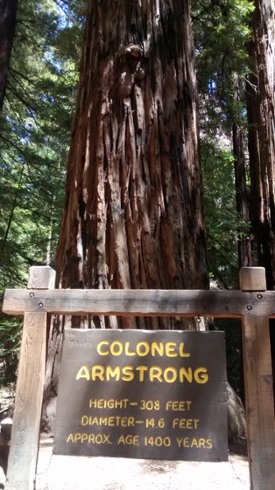
Colonel Armstrong Tree
Nate Martin '16, English Literature, is a President's Summer Fellow on a trip through the American Southwest with the goal of rewriting his connection to poetry by visiting areas where he first established that connection.
It was one of the last nights of my trip and I was in northern California, looking for a place to sleep. I googled "campgrounds" and after rejecting a bunch of RV parks that came up, I found Bullfrog Pond Campground. It seemed remote and also near, so I set the google directions to it from my phone and headed there.
I turned off I-5, onto a winding river road through small communities. This ended in a small town where I turned onto a smaller road. This road ended at a park entrance. The sign said "Armstrong Redwoods State Natural Reserve." I was immediately ecstatic, as the coastal redwoods were the final thing I really wanted to see on this trip. I've wanted to see them since I first learned they existed, more than a decade ago.
Continue reading Presidents Summer Fellowship, Rediscovery and Writing in the Desert Part 3, Nathan Martin
Presidents Summer Fellowship, Art Therapy in Italy Part 3, Margaret MacLean
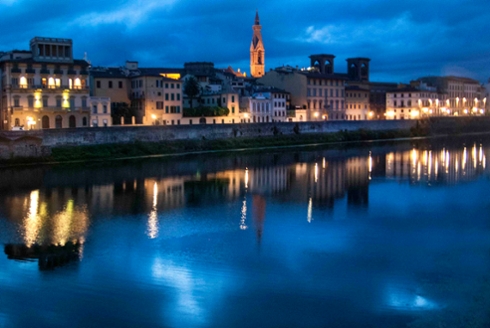
President's Summer Fellow Margaret MacLean '16, studio art major, is leading art classes for youth with intellectual and developmental challenges at the Cooperativa Barberi in Florence, Italy. Read on for the third installment of her adventures:
It is so strange to be back in Portland away from the hustle and bustle of Florence. I realize that I felt very big in Florence in a wide-clunky-taking-up-space sort of way. Biking to work or class I was constantly dodging tourists, locals, and dogs on narrow streets. Coffee is served in the smallest of cups. Kitchen appliances are tiny. Doorways are smaller than in the US, chairs and tables are lower, and there is always a stranger’s elbow to accidentally bump into. Being back in Portland I feel like I have space to breathe, but I still miss the chaos.
Presidents Summer Fellowship, Modeling Fluid Dynamics Part 2, Qiaoyu Yang
President’s Summer Fellow Qiaoyu Yang ’16, mathematics major, is testing a probabilistic particle model for studying fluid dynamics with Prof. Aleksandar Donev at the Courant Institute in New York City. In this post, he explores the differences between research in applied versus pure math.
The end of summer approaches. So does my summer research at Courant Institute. It’s been an exciting and productive time. During my time at Reed, I have done several research projects, some in pure math and others in applied math. Among these experiences, I liked the one I did in my freshman summer and the one I did this summer the most. They feature different characteristics of research in pure and applied math. I think some of these differences are quite interesting and would like to share them to people interested in math and emphasize the distinctions between pure and applied math.
I did the first project in the summer of 2013 with Dave, i.e., Prof. David Perkinson, in the math department of Reed. We worked on combinatorics and graph theory, a branch of discrete math. On the other hand, the research project I did this summer is building a stochastic particle model. This is a topic in scientific computation, which is a part of applied math. In the following, I will try to compare my experiences and give the readers some flavors of what research is like in pure and applied math. Of course I need to admit that these are totally based on personal experience and they can be very biased. Also, I’m still learning about math, and a lot of things highly depend on the specific subject so my conclusions can be over-generalizing. But this is not writing a research paper so I don’t want to be too rigorous in all aspects.
President's Summer Fellowship 2015: Nathan Martin - Part 2
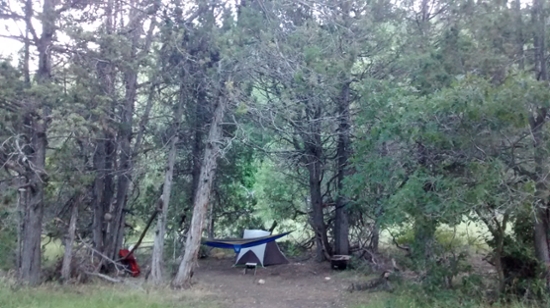
My gloriously lazy hammock camp on a backpacking trip in Bryce Canyon - Riggs Spring Loop Trail.
Nate Martin '16, English Literature, is a President's Summer Fellow on a trip through the American Southwest with the goal of rewriting his connection to poetry by visiting areas where he first established that connection.
I was thinking about Sylvia Plath. I was reading The Colossus, and briefly read a poem called “Mushrooms.” I didn't like it much, and I started to wonder why. Why did Plath like it enough to include it in her collection? Does anyone like it? What makes one poem better than another? Why is one good, and another bad? Is it just relative, subjective? Is it about connections? Complexity? Simplicity? My mildly negative reaction to one poem brought me to questions about aesthetics, and, as sometimes happens when questions are piled up, I came up with some answers. But first I decided to try to write a really bad poem. Here it is:
This tree is like my heart.
Continue reading President's Summer Fellowship 2015: Nathan Martin - Part 2
Presidents Summer Fellowship, Supernatural Shakespearian Webseries Part 2, Liz Groombridge

Watch Act I Scene I .
President’s Summer Fellow Elizabeth Groombridge ’16, psychology/theater major, is writing and creating a queer, supernatural webseries, “The Green’s Apartment”, based on Shakespeare’s comedy As You Like It.
Bumps Along the Road
We wrapped filming on August 8th in Chicago. It was an amazing experience with so many wonderful people. The whole cast was great and did so well with their parts. It was a stressful experience, filming, because I blocked out 4 hours to film each episode, and for some episodes that was more than enough and for some it was a little short. I learned so much about directing film over the course of this project, because I've never done anything on this scale before. The more episodes I shot, the better my shot compositions became, and the more I understood how to make things dynamic on camera.
But I think what really helped me learn more about how to direct film was editing it. Choosing to edit during the process was a really good decision, I think, because by watching my footage so carefully and piecing together the narrative from different angles, I began to really understand what looked good and what looked awkward or flat. This has been an amazing learning experience for me.
Continue reading Presidents Summer Fellowship, Supernatural Shakespearian Webseries Part 2, Liz Groombridge
Presidents Summer Fellowship 2015: Haley Tilt, Visual Memory and Livy, Part 2
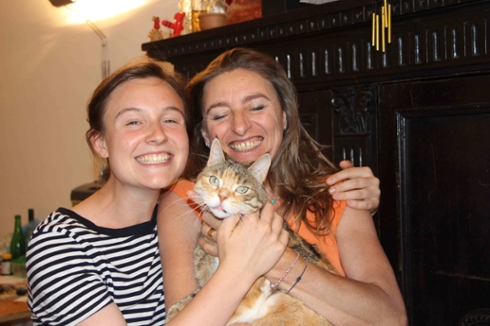
Haley Tilt, '16, Classics, is adventuring in Rome, tracing and chronicling the geography described by the ancient historian Livy. She plans to create a virtual, interactive map of ancient Rome, based on Livy's depictions.
My last weeks in Rome were glorious. Finally comfortable with the city, I decided it was time to venture out into the other, more remote places Livy discusses. One of these places was the town of Veio, forty minutes North of Rome by car, two or more hours by bus.
On the rolling hills above Veio sleep the remains of Veii, the jewel of ancient Etruscan cities. Now a national park, Veii offers little to a casual tourist group. Once immense, the only area of the city now accessible to visitors is a reconstruction of a temple complex dedicated to Apollo. It’s beautiful, but not what I’m looking for. I’m searching for the cittadella, the citadel of Veii, and the seat of the symbolic power Veii held for Livy. The maps I’m accustomed to in US parks never manifest, so I’m left asking the few locals walking their dogs if they know what I’m looking for. No, they tell me, they don’t know where the cittadella is. Finally I find a woman sitting beside a waterfall, and when I ask her my question, she responds to me in perfect English, peppered with a funny combination of Italian and British sounds. Yes, she knows where it is, and she gives me detailed directions, which I will later botch completely, wandering through the hidden parts of the park. She even knows a version of Veii’s defeat by Rome, decidedly different from the version in Livy.
Presidents Summer Fellowship 2015 - Orla O'Sullivan - Part 2
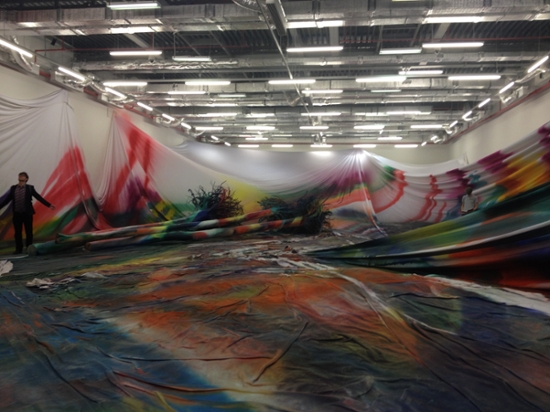
yes no why later by Katharina Grosse, Garage Museum of Contemporary Art, Moscow
Orla O'Sullivan '16, Russian major, is diving deep into the extensive collections at the State Hermitage Museum in Saint Petersburg, Russia, conducting research on visual culture and responses to controversial exhibitions for her President's Summer Fellowship.
I’ve held off on my second post, because I’ve been struggling with the realization that my project, which had originally aimed to document others’ responses to contemporary art at the Hermitage, has had to take a different track, one which has been both more personally difficult and fulfilling than I had expected.
A few weeks into my internship, I realized that implementing my project per the original plan without going completely rogue was going to be nevozmozhno, impossible. What previously seemed like a fast-paced, ever-changing series of projects revealed itself as a series of events that should have been planned months ago, but were instead hastily assembled four days prior to their official presentation date. We could complain of a lack of helpers, but that would be inverting the truth. There’s no lack of helpers (the museum pumps out visas for students from impressive European universities like clockwork); there’s just no available record of them. So when some of the more determined volunteers do make an attempt to draft a project schedule or add a little logistical infrastructure, they usually become completely overwhelmed with the scale of their endeavor, the difficulty of contacting people, and the list of unfinished projects barreling toward their deadlines.
Continue reading Presidents Summer Fellowship 2015 - Orla O'Sullivan - Part 2
Presidents Summer Fellowship - Art in Italy - Margaret MacLean - Part 2
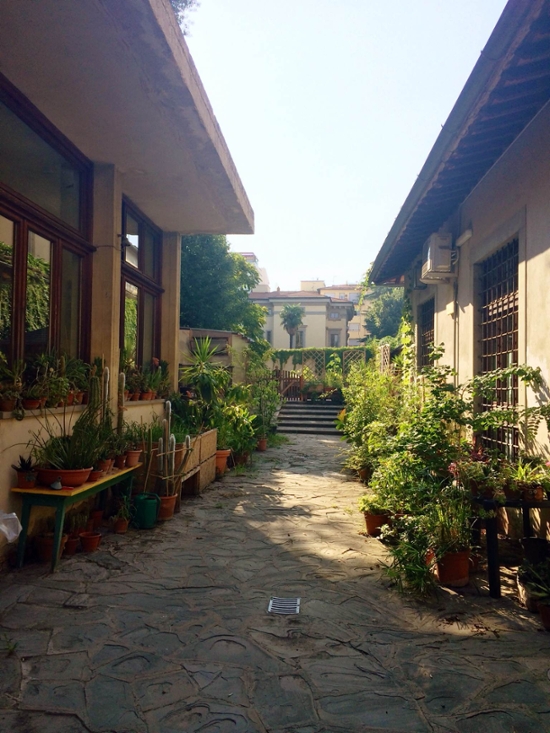
The beautiful Cooperativa Barberi.
President's Summer Fellow Margaret MacLean '16, studio art major, is leading art classes for youth with intellectual and developmental challenges at the Cooperativa Barberi in Florence, Italy. Read on for her adventures:
The hardest part of my PSF experience so far has been wrestling with my expectations. The dreaming and planning I did to prepare for Italy was incredibly important but also left me with some lofty ideas about what my summer would look like. My views on all of the things I came here for have shifted. My project has taken a slightly new shape and is far less sparkly and neat than it was in my imagination. I suppose this is to be expected!
First of all, my relationship towards my photography has changed. Usually I feel like my camera gives me the power to enter into spaces and situations that I couldn’t ordinarily. As photographer Diane Arbus said, “the camera is a kind of a license” that allows you to ask more questions and look more carefully than is usually socially acceptable. But in Florence during peak tourist season, with a camera in hand I feel like a tourist, not an artist. When I click the shutter button I feel like I am a part of a tourist culture that takes-takes-takes and gives nothing back. Italy’s biggest industry is tourism and in Florence so many things are constructed purely for tourists to experience and photograph. I don’t know if what I am feeling is genuinely a dislike for this exploitative aspect of photography or simply a form of artistic self-consciousness. Probably a bit of both.
Presidents Summer Fellowship, Nanofluids and Gene Mapping Part 2, Abrar Abidi

For his President's Summer Fellowship, Abrar Abidi ’16, physics major is working in a lab at McGill University in Canada, helping to develop new nanofluid technology to improve DNA mapping methods. Read on for his second blog installment:
On so many warm summer evenings here, red and white flares shoot up on the horizon, hissing as they go, before exploding with a deafening pop, forming a lavish spectacle in the Montreal sky. Often as I sit in my little Victorian-era apartment, sudden bangs and crackles send me rushing out to the roof of my building, so I can look toward the harbor, where on an otherwise forlorn stretch of land, six thousand rockets now fire heavenward in a single night. Yearly, the largest firework festival in the world—a kind of pyrotechnic Olympics—takes place in Montreal throughout the month of July. Groups from countries across the world, with their eyes set on prestigious awards, collect in this city to show off their talents in front of three million people. This year, England won the gold medal, while France took home silver and China, bronze. All this amid a procession of other festivities celebrating jazz and African cultures and circus arts and film and comedy. On the few nights not occupied by these events (and we’re still talking only of July), there are huge live music shows, free to the public, many taking place a two-minute walk from my front door.
The lab is a far quieter and colder place. With vents constantly blowing dry, chilly air on every floor of the building, I’ve taken to swaddling myself in at least three layers. Fortunately, the work I do expunges all my guilt for staying indoors. The opportunity to participate in this lab’s experimental efforts is what lured me to McGill in the first place, and in the previous month, my project has taken on a more experimental flavor. Sara, a good friend and researcher with whom I’ve been working closely since June, gave me the task of analyzing thousands of fluorescence microscopy images, zoomed in so close that a fraction of the width of a single human hair could easily eclipse the viewfinder. Fluorescence microscopy is a remarkable technique, where special dyes are used to stain the object of interest, causing it, when illuminated by a powerful lamp, to cast a vivid, luminous glow, no less dazzling to the eyes than the firework displays I can sometimes see from the lab window. Our microscopes are trained on minuscule nano-devices that Sara very cleverly designed and fabricated. Below the glass cover slip, and within these tiny devices, anywhere from a few dozen to several hundred strands of DNA can be seen drifting here and there, tossed about by Brownian motion, flashing like fireflies in the night. Then, with the flip of a switch, the strands rush toward the centers of a series of equidistant spaces, where they accumulate and extend, resembling a phalanx poised for battle. A dial that controls the frequency of a current sent through the device can manipulate their movement, alternately dispersing and concentrating the DNA. The potential applications for this invention are dizzyingly exciting: nothing less than the technology future generations might use to map entire genomes, at speeds and with accuracies far beyond anything currently possible.
Presidents Summer Fellowship, Connecting to Armenian Artists Part 2, Knar Hovakimyan

Working on the ground in Armenia, President’s Summer Fellow Knar Hovakimyan ’16, linguistics major, seeks to introduce Armenian literature to English-speaking communities through poetry translation.
I just finished unpacking back home in LA. When I opened my suitcase, I was greeted by the faint smell of khorovats (Armenian barbecue) in my clothes: the pants that I wore to harvest apricots at my uncle's, the sweater I wore to Lake Sevan on a stormy day. I removed the large number of books I had managed to fit in my suitcase: I remembered discussions with poets at different cafes, afternoons I spent scouring through several volumes to pick which poems I wanted to translate, the look of the books scattered across our apartment all month. My sunscreen spilled all over everything; I had completely neglected to use it on our sightseeing side-trip to Khor Virap, Noravank, Tatev and Karahunj. My purse was crushed way at the bottom of the suitcase, water-stained from the day strangers poured three buckets of water on my head in celebration of Vardavar.

Continue reading Presidents Summer Fellowship, Connecting to Armenian Artists Part 2, Knar Hovakimyan
Presidents Summer Fellowship, Art in Italy, Margaret MacLean
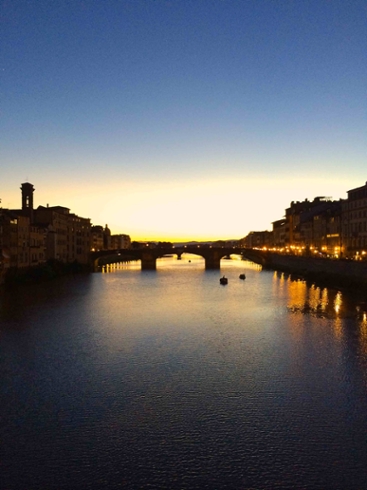
President's Summer Fellow Margaret MacLean, '16, studio art major, is leading art classes for youth with intellectual and developmental challenges at the Cooperativa Barberi in Florence, Italy. Read on for her adventures:
Today I ran down an “up” escalator with my stomach full of mozzarella and espresso. Honestly, this is a pretty good metaphor for how the last month and a half has been for me in Italy: exhilarating, frustrating, accompanied by plenty of moving backwards, and success only after a big leap of faith. And always after eating a little more than I thought I could!
The weather in Florence is almost unbearably hot and humid but I am getting used to it. I spend my mornings in Italian class and my afternoons volunteering in art therapy or exploring the city. I drink at least two espresso a day, speak only Italian at home, and I am slowly cooking my way through a Tuscan cookbook. I work in the garden with my host nonna (grandmother). I practice my landscape sketching on the banks of the Arno and in various piazze (plazas) around the city. When I get homesick and/or overheated I watch American movies dubbed in Italian at the foreign movie theatre. I am loving my volunteer work, my students, and the new friends I have made here.
Continue reading Presidents Summer Fellowship, Art in Italy, Margaret MacLean
Presidents Summer Fellowship, Nanofluids and Gene Mapping, Abrar Abidi
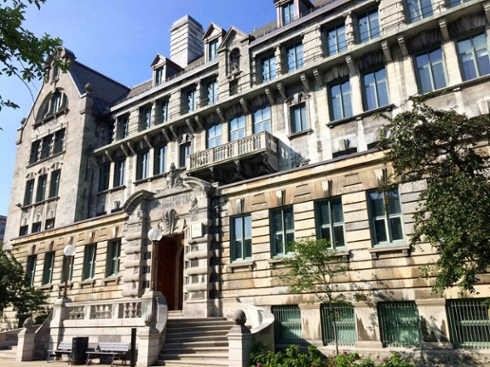
For his President's Summer Fellowship, Abrar Abidi ’16, physics major is working in a lab at McGill University in Canada, helping to develop new nanofluid technology to improve DNA mapping methods.
A chemist who had close friendships with both Albert Einstein and Ernest Rutherford was once asked to share his recollections of the two men. In response, he explained:
“[Einstein] always spoke to me of Rutherford in the highest terms, calling him a second Newton. As scientists the two men were contrasting types—Einstein all calculation, Rutherford all experiment… There was no doubt that as an experimenter Rutherford was a genius, one of the greatest. He worked by intuition and everything he touched turned to gold. He had a sixth sense.”
Presidents Summer Fellowship, Modeling Fluid Dynamics, Qiaoyu Yang

President’s Summer Fellow Qiaoyu Yang ’16, mathematics major, is testing a probabilistic particle model for studying fluid dynamics with Prof. Aleksandar Donev at the Courant Institute in New York City.
After finishing my study abroad program in Moscow, I flew to NYC on May 23rd. The weather is terribly hot here. It took me two days to settle down and then I went to meet my supervisor, Prof. Aleksandar Donev, in the Courant Institute.
Courant is really amazing. It’s a leading center for research and education in applied mathematical science, as well as in computational and some fields of pure math. There are researchers working on different areas of mathematical science, such as computational biology, fluid dynamics, mathematical finance, and so on. Prof. Donev is working on computational physics and chemistry, so my project is also closely related to these two subjects.
Continue reading Presidents Summer Fellowship, Modeling Fluid Dynamics, Qiaoyu Yang
